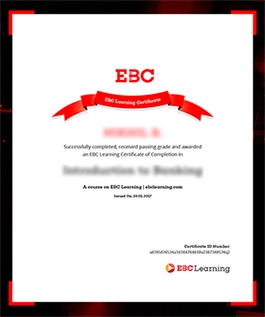EBC Webstore
Eastern Book Company
|
|

 Home > E-LEARN > Property > Contract Law Home > E-LEARN > Property > Contract Law |


 5
5
About the Course
A negotiable instrument is transferable with a simple procedure requiring just a signature and delivery. This module begins with a short introduction to negotiable instruments and their kinds. We then walk you through what are promissory notes, bills of exchange, and cheques. The subsequent chapters of this module will give you an in-depth understanding of the difference between negotiation and assignment, endorsement, ambiguous and inchoate instruments, holder and holder-in-due-course, and the consequences of a negotiable instrument being dishonored. The two important terms' noting' and 'protest' are discussed in detail in the last part of this module.
| Effort | 2h 4m |
This module includes 42 videos and all relevant sections. It also includes practice exercises, examination pointers, mind maps and flashcards along with the full text of cases.
This module is a self-paced course on understanding the concept of negotiable instruments. The high-quality content with interactive slides throughout the course ensures engaging and easy learning. The supplementary section of the module contains the full text of cases to facilitate your learning with deeper understanding of all the issues involved in each case. At the end of the module, you will be empowered with all the conceptual clarity of this highly technical Act. The discussion forum will help you post your queries and doubts. This course will not only benefit law students but also the lawyers, bankers and aspirants for the judicial service examination.
Instructor

Charu Mathur has rich and diverse expertise in corporate, commercial, civil, criminal, and constitutional law matters. She is an Advocate on Record at, the Supreme Court of India. She has represented parties which include cricketing bodies and educational institutions like IIT Jodhpur, NLU Jodhpur, BPUT Orissa, MPUAT Rajasthan, and private engineering and medicine colleges of Gujarat, and Orissa.
Complete this course and exercises to earn a certificate. Share it with your friends, colleagues, and employers.*
*You must "Subscribe" to get a certificate.

1. Introduction
I. Relevant sections
1.1 Introduction
2. What is a negotiable instrument?
I. Relevant sections
2.1 What is a negotiable instrument?
2.2 Characteristics of a negotiable instrument
2.3 Presumptions as to the negotiable instrument
2.4 Kinds of negotiable instruments
II. Exercises
III. Examination pointers
3. Promissory note
I. Relevant sections
3.1 Promissory note
3.2 Characteristics of the promissory note
II. Exercises
III. Examination pointers
IV. Full text of leading cases
4. Bill of exchange
I. Relevant sections
4.1 Bill of exchange
4.2 Characteristics of the bill of exchange
4.3 Classification of bills
4.4 Bills in sets
4.5 Difference between bill of exchange and promissory note
II. Exercises
III. Examination pointers
IV. Full text of leading cases
5. Cheque
I. Relevant sections
5.1 What is a cheque?
5.2 Essentials of cheque
5.3 Types of cheques
5.4 Crossing of cheque—Reasons
5.5 Types of crossings
5.6 Truncated cheque
5.7 Difference between cheque and bill of exchange
II. Exercises
III. Examination pointers
6. Negotiation and assignment
I. Relevant sections
6.1 Negotiation
6.2 Assignment
6.3 Difference between negotiation and assignment
II. Exercises
III. Examination pointers
7. Indorsement
I. Relevant sections
7.1 Indorsement or endorsement
7.2 Essentials of a valid endorsement
7.3 Effects of endorsement
7.4 Types of endorsement
7.5 Cancellation of endorsement
II. Exercises
III. Examination pointers
8. Ambiguous and inchoate instruments
I. Relevant sections
8.1 Ambiguous instrument
8.2 Inchoate stamped instruments
II. Exercises
III. Examination pointers
9. Holder and holder in due course
I. Relevant sections
9.1 Holder
9.2 Rights of a holder
9.3 Holder in due course
9.4 Privileges of the holder in due course
II. Exercises
III. Examination pointers
10. Dishonour of negotiable instrument
I. Relevant sections
10.1 Dishonour of negotiable instrument
10.2 Dishonour by non-acceptance
10.3 Dishonour by non-payment
10.4 Notice of dishonour
10.5 Mode and place of notice
II. Exercises
III. Examination pointers
11. Noting and protest
I. Relevant sections
11.1 Noting and protesting generally
11.2 Noting
11.3 Protest
II. Exercises
III. Examination pointers
12. Road ahead
12.1 Road ahead
II. INDEX (FULL TEXT OF CASES)
INDEX: Full text of cases
|
|
||
|
||
|